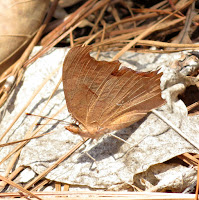This blog post was inspired by an article published recently about ‘tree blindness.’ It was a story about people living in a city with trees all around them but they didn’t know what kind of trees they all were. The author led occasional walks to help people put a name on these mystery trees. I feel that people have a similar blindness to the concept of ‘native’ plants and the plants that are growing all around them.
The biggest purpose of this blog is to help people learn more about the native plants of Georgia. It’s my hope that readers might be inspired not just to appreciate them but also to use them in their landscapes: their personal gardens, their school gardens, community and church gardens, and anywhere they might be deciding about plants to use.
We see plants all around us: the plants the builder (or previous owner) installed in our landscape, the plants in parking lots and in professionally landscapes, the plants for sale in the nursery, and the plants in natural areas like roadsides and parks. Some of these plants are indigenous (that is, they were here before European settlement) but many of them were imported by humans. Wouldn’t it be fun to know which are which? Indigenous plants are our neighbors, we should get to know them.
Like this goldenrod here. This is the common goldenrod (Solidago altissima) you see on the side of the road. If you don't know what it is, you might think 1) it's invasive, 2) it causes allergies, or 3) it's not native. While it is aggressive (point #1), it is a major source of pollen and nectar for native pollinators (including the beautiful Monarch butterfly). In addition, its pollen is so heavy that it doesn't get picked up by the wind and blown into your nose. Furthermore, it is a host plant for 115 different butterflies and moths. Letting it flower in vacant places and along roadsides is a wonderful way to support insects.
Like this goldenrod here. This is the common goldenrod (Solidago altissima) you see on the side of the road. If you don't know what it is, you might think 1) it's invasive, 2) it causes allergies, or 3) it's not native. While it is aggressive (point #1), it is a major source of pollen and nectar for native pollinators (including the beautiful Monarch butterfly). In addition, its pollen is so heavy that it doesn't get picked up by the wind and blown into your nose. Furthermore, it is a host plant for 115 different butterflies and moths. Letting it flower in vacant places and along roadsides is a wonderful way to support insects.
 |
| Liriodendron tulipifera |
Once you get more experienced in being curious about plants, you’ll start to notice more clues like leaf arrangement, flower characteristics, fruits, bark, and even the insects that use them.
The tulip-shaped flower shown here is the flower of the tuliptree (Liriodendron tulipifera), a large tree that is native throughout Georgia. If you learned more about it, you'd find out that it 1) gets tall quickly, 2) supports bees in the spring, 3) is one of the host plants for the Eastern Tiger Swallowtail which is a large yellow butterfly that is the state butterfly of Georgia.
You can join groups of people who are just as curious: Georgia Botanical Society, Georgia Native Plant Society, and online groups (if you’re on Facebook there are many of them). You might enroll in courses such as the popular Master Naturalist courses, and the Native Plant Certificate program at the State Botanical Garden.
I love being able to notice native plants and appreciate them for their sense of place. The beautiful deciduous magnolias have been a part of Cherokee County long before I got here. I can find them in natural woods and peeking out of roadsides throughout the county. I rescued them from development in one part of the county and brought them to my garden; I later found out from a neighbor that they grow naturally in his backyard. How’s that for sense of place!
Sunny, natural areas are full of color this time of year as the goldenrods and asters burst into bloom. They’ve been blooming here for thousands of years. Having them in my garden is a way to honor the heritage of Georgia’s natural beauty. It also supports the complex local ecosystem that depends on their presence: insects and critters of unbelievable diversity – well, until you get to know them and then you are just amazed at what lives beside us every day.
 |
| Magnolia macrophylla, native all around me |
 |
| Liatris pilosa and Solidago nemoralis |




















